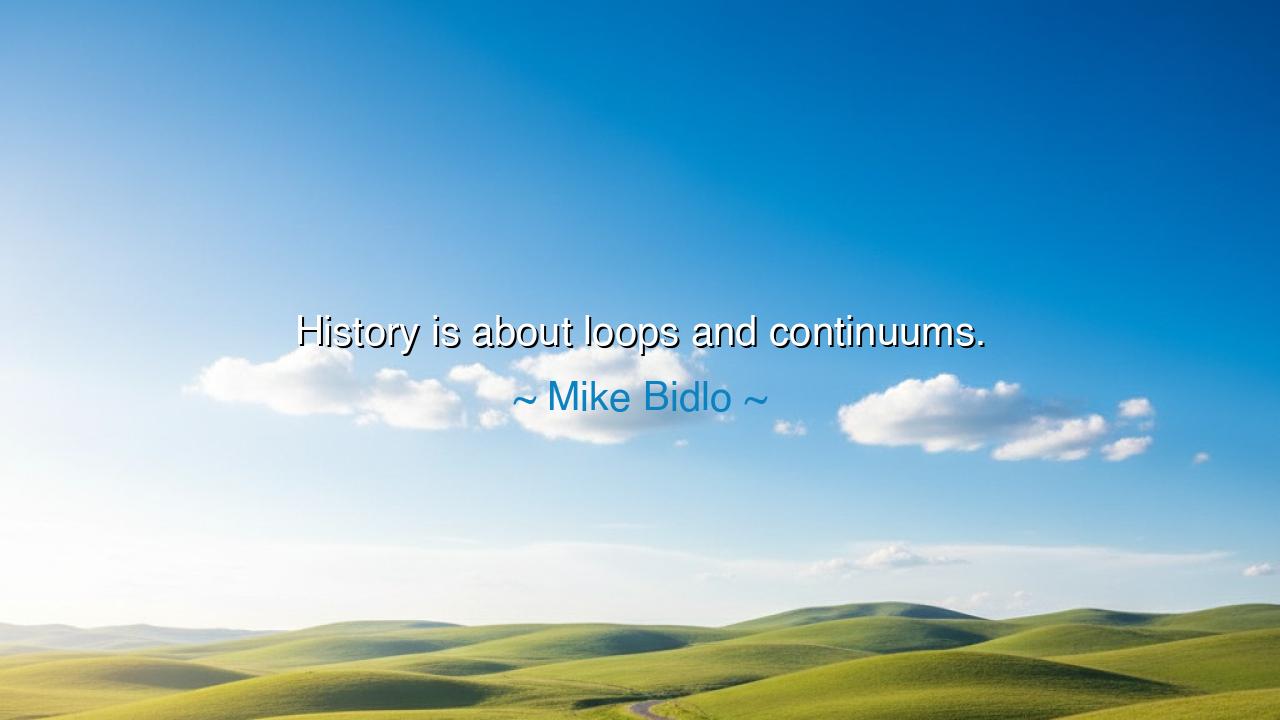
History is about loops and continuums.






The artist Mike Bidlo, known for reinterpreting and recreating the works of others, once declared: “History is about loops and continuums.” In these few words lies a truth both eternal and unsettling — that the story of humankind is not a straight road, but a circle, forever turning upon itself. Time, like a serpent, devours its own tail. Empires rise as others fall, ideas are reborn in new tongues, and the songs of yesterday echo again in the voices of today. History, as Bidlo reminds us, does not move forward as a soldier marches; it flows and returns, repeating its patterns while changing its form.
When Bidlo spoke of loops and continuums, he did so as one who had seen how the past never truly dies. His art itself was a meditation on this truth — he recreated the works of Picasso, Pollock, and Duchamp not to imitate, but to reawaken them, to show that even what is old may live again in new hands. In this way, Bidlo revealed that art and history are siblings: both are born from repetition and transformation. The loop is the reminder that nothing begins entirely anew, and the continuum is the thread that binds all moments, ensuring that no era is truly isolated from those before or after it.
The ancients understood this wisdom well. They saw time not as a line, but as a wheel. In India, the sages spoke of the Yugas, vast cycles of creation and destruction. The Greeks spoke of the Ages of Man, from gold to iron, destined to repeat. And the Stoics, those philosophers of calm, believed that the universe itself would one day burn and be reborn, identical in every detail. What Bidlo says in modern words, they proclaimed in myth and prophecy: the human journey is cyclical, and every age is both a reflection and a renewal of what came before.
Consider, for example, the fate of Rome. Once it conquered the known world, spreading law, art, and order — only to rot from within and fall beneath the weight of its own greatness. Centuries later, Europe rose from Rome’s ashes, borrowing its laws, reviving its art, wearing its symbols anew. The loop continued, the continuum endured. And in time, new empires across the ocean took up Rome’s mantle again — their monuments of marble replaced by towers of glass, their legions by markets and machines. So the past returns, not as shadow, but as mirror.
Even in the realm of the spirit, history’s loops persist. Every generation rises with fire in its heart, swearing to break free from the errors of the old. Yet in time, it too becomes the oppressor, the weary guardian of what it once rebelled against. The children of revolution become the fathers of order. Thus, history teaches humility — for the continuum spares no one. To forget this is to repeat the mistakes we condemn; to remember it is to act with wisdom and compassion, knowing that every victory may one day turn to folly, and every defeat may bear the seed of rebirth.
The meaning, then, of Bidlo’s phrase is not despair, but awakening. If history is about loops and continuums, it means that every end carries a beginning within it, and every fall prepares the ground for renewal. The wise do not curse the cycle — they learn to dance with it. They study the past not to live within it, but to recognize its patterns and steer their fate through the turning of time’s wheel.
So let the lesson be this: remember what has been, for it will come again — but perhaps, through your understanding, it may come better. Do not believe that your age is free from the echoes of the past; rather, seek to break the harmful loops and strengthen the sacred continuums — the values of truth, mercy, and creation that endure through all ages. For in the end, as Bidlo shows, we are not the authors of history but its instruments — each of us a note in a song that began long before us, and will continue long after. And if we play our part with care, perhaps the next verse of that song will sound a little closer to harmony.






AAdministratorAdministrator
Welcome, honored guests. Please leave a comment, we will respond soon